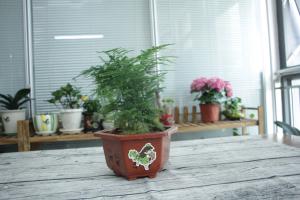Can You Plant Trees on Easement?
An easement is a legal agreement between two parties that allows one party to use a portion of someone's property for a specific purpose. This means that the owner of the property may grant others permission to use their land for utilities, access, or other purposes. However, if you are considering planting trees on an easement, there are a few things you need to know.
What is an Easement?
An easement gives someone the legal right to use a portion of someone else's property. This is typically done for specific purposes, such as allowing utility companies to lay pipes or power lines, or for providing access to, from, or across a piece of property. An easement does not give the person who benefits from it ownership of the land, only the right to use it for a specific purpose.
Can You Plant Trees on an Easement?
Whether or not you can plant trees on an easement depends on several factors, such as the type of easement, the location of the easement, and any local laws or regulations. In general, tree planting on an easement may be allowed, but it is important to check with your local authorities to determine if there are any restrictions or regulations in place.
If you have a utility easement on your property, it may be in your best interest to avoid planting trees or other landscaping features. This is because utility companies typically have the right to cut down any trees or bushes that interfere with their access to power lines or other utilities. Planting trees within an easement that provides access to another property may also be problematic if those trees block access to that property.
What are the Risks of Planting Trees on an Easement?
Planting trees on an easement can pose several risks, depending on the nature of the easement and the type of tree being planted. For example, if the easement is for a utility company to access power lines, planting tall trees nearby could interfere with those lines, resulting in power outages or other problems. Similarly, planting trees within an easement that provides access to another property could result in disputes with that property owner.
There are also legal risks associated with planting trees on an easement. If the trees interfere with the use of the easement or cause damage to infrastructure or property, the property owner could be held liable for those damages. It is also possible that the property owner could be fined for violating local laws or regulations pertaining to easements.
Conclusion
Planting trees on an easement may be possible, but it is important to consider the risks involved. Before planting any trees, it is essential to check local laws and regulations, as well as the terms of the easement agreement. If you are uncertain about whether or not you can plant trees on an easement, it may be best to consult with a lawyer or other legal professional who can provide guidance on the matter.
Regardless of whether or not you decide to plant trees on an easement, it is always a good idea to work closely with the party benefiting from the easement to ensure that everyone's rights and interests are protected.

 how many times do yo...
how many times do yo... how many planted tre...
how many planted tre... how many pine trees ...
how many pine trees ... how many pecan trees...
how many pecan trees... how many plants comp...
how many plants comp... how many plants can ...
how many plants can ... how many plants and ...
how many plants and ... how many pepper plan...
how many pepper plan...

































